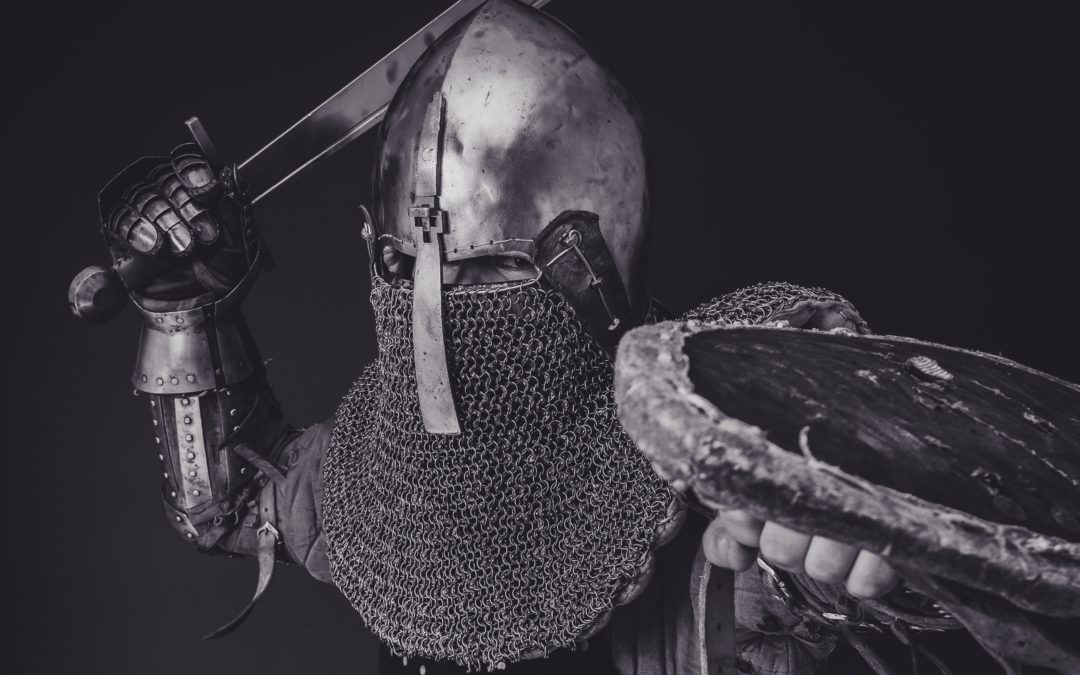Are you one of those people who skip fight scenes? Fantasy author Brandon Sanderson says some people skim or skip fights. Most of them are women.
Now before you scream “Heresy!” and start burning down houses, take a minute and think about why some readers don’t like fight scenes. Try to come up with at least three reasons. And do not say, “Because they are stupid.” Referring either to fight scenes or readers. *winks*
Do you have a list yet?
Here’s mine:
There are certainly more reasons, but we only have so much time. Let’s dive in and figure out how we can write riveting fight scenes.
Too Much (or too little) Description
We live in a culture saturated by film. To be entirely honest, most of the stories I’ve been absorbing lately have been from movies and TV shows.
For the sake of this article, most of my examples will be from popular film (e.g. Marvel and Star Wars).
You can learn a lot about writing from visual storytelling. Movies work on the principle of show-don’t-tell.
However, writing a fight for a book requires a different approach than writing for the big screen.
It seems so simple: just describe the scene. What’s so hard about it?
Think of your favorite cinematic fight. You know, the one that keeps you glued to your seat even after you have seen it a thousand times. The one where your heart rate picks up and you can feel the adrenaline coursing through your veins.
In a lecture on writing fight scenes, Brandon Sanderson says that movies can show us every punch and every parry because film is a visual media. When writing, he says, it’s best to avoid blow-by-blow accounts as they get tedious very, very quickly.
At the same time, vague fight scenes are boring.
I’ll be honest here. I’ve taken the easy way out and simply written “They fought” a few times in my writing career. Whether I’m promising myself I’ll come back and flesh out that scene when I edit or am simply too lazy to put forth the effort required to write a decent scene, vague fight scenes are never a good idea.
Why?
Because if you don’t take the time to describe the scene, why bother including it?
Brandon Sanderson goes on to say the show-don’t-tell rule still applies to fight scenes. If you just say “They fought,” you’re simply telling your reader what happened. They don’t get to see the fight play out in their minds.
But how do you know if you’re showing too much or telling too much?
It’s all about balance, dear KeePer.
Gif credit: Tenor
One of my favorite description techniques is to find one unique element and focus on that.
For example, say I’m writing about the final battle between Obi-Wan Kenobi and Anakin Skywalker in Revenge of the Sith from Obi-Wan’s point of view. Here’s how I might describe it: I watch Anakin warily, my lightsaber at the ready. As I struggle to balance on the railing, a wave of lava crashes near me, little embers singeing my tunic.
In that example, I found one element of the scene (embers of lava) and brought it to your attention. This technique works best if the detail you pull out is unique to your scene.
Let’s be honest, while “the hiss of steel on steel” is really cool, it could describe pretty much any sword fight.
View your scene the way a photographer might. Anyone can take a picture of the Grand Canyon. Only a few can capture the glint of the Colorado River coursing through the red walls of stone.
Catching an interesting element keeps your reader’s attention from drifting and keeps them grounded in the fight.
No Apparent Reason for the Fight
Your fight scene needs to have a reason for being in your story. The reader has to be able to ask the question “Why is this scene important?” and come away with a solid answer.
“Because it was cool” does not count.
This is a problem I see in the fight scenes in both Marvel and Star Wars. Sometimes, the fights are simply there because a) it’s expected and b) explosions are just plain cool.
Don’t get me wrong, I love explosions.
Gif credit: Giphy
But there needs to be a point. It needs to move the plot forward or affect a character in some way.
Maybe the warehouse that blew up was owned by the main character’s family. Maybe they had parked their only car behind it. Maybe the explosion reveals who the villain of the story is.
The same goes for fights. Sure, they can be cool, but they must have a purpose.
Take the fight between Darth Vader and Luke Skywalker in The Empire Strikes Back. The scene has a clear purpose: show Luke is not ready to face Vader and reveal who Vader truly is.
Gif credit: Giphy
It’s not just there because George Lucas wanted some lightsaber action. It serves a larger purpose for the plotline of the entire trilogy. If you were to remove this fight sequence, it would dramatically affect the rest of the story.
When you try to determine whether your fight scene has a good reason to exist, ask yourself this: “Would it matter to the storyline if I removed this scene?”
No Apparent Reason to Care about the Outcome
Have you ever been reading or watching a fight scene and you get a sickening feeling in your stomach as your hero takes blow after blow?
Chances are you were emotionally invested in that fight. You truly cared about the outcome. It wasn’t just another scene to you. It was life or death.
For your readers to care about the outcome of the fight, they must be emotionally invested in the characters.
For example, if I were to watch a fight from a Marvel movie with my mom, she wouldn’t care as much as I would.
Why?
Because she doesn’t watch Marvel movies and does not have a connection with any of the characters. I, however, have a good reason to care about the outcome of the battle because I know and understand the characters.
It is also vital that your characters are emotionally invested in the scene. If you want your reader to care, your characters must care. This can’t just be a routine fight. It has to have consequences and stakes (more on that in a minute).
Two of the best examples of emotionally charged fight scenes I can think of are Anakin Skywalker vs. Obi-Wan Kenobi in Revenge of the Sith (note: towards the end of this scene, it gets pretty graphic) and the final fight between Iron Man and Captain America in Captain America: Civil War (note: there’s some language in this scene).
- In both fights, the characters are emotionally invested. Obi-Wan is upset that his closest friend betrayed him. Iron Man is angry at Captain America for several reasons, one of them being sheltering his parents’ murderer.
- After two movies (plus spin-off TV shows) watching these pairs work together, the viewer feels the turmoil of the scene as former friends turn against each other. Because they have spent so much time with these characters, they care about them. (This does not mean you have to write two books before your reader will care about your characters.)
- Both sets of opponents are evenly matched. Obi-Wan and Anakin know each other's fighting styles. While Iron Man and Captain America have different skill sets, either one could easily overpower the other.
That last point leads to a second way you can make your reader care about the outcome: Make it very possible the hero could lose.
If your hero can wipe out all the henchmen in a matter of seconds without breaking a sweat, your reader is going to be bored. No one wants to watch someone play a video game on the rookie setting.
Your fight scene needs to have stakes, they need to be high, and there has to be a very good chance of failure on the hero’s part.
This is why I love the fight between the Avengers/Guardians of the Galaxy and Thanos in Infinity War. It seems simple enough. There are plenty of heroes, some of them fairly powerful, and one bad guy. Easy peasy, right? Nope.
Or think of Vader versus Luke in The Empire Strikes Back again. Luke is extremely overmatched. The likelihood of him winning is very small, though there are a few moments where he seems to have the upper hand.
However, failure is not limited to losing a battle physically. There is something to be said for moral battles.
Your hero could be in a situation where they could win the battle, but to do so would compromise their honor and all they stand for. If they take that opportunity, they might win the outward battle but lose the one that truly matters.
An example of this would be in C.S. Lewis’ Prince Caspian when Caspian has the chance to kill his usurping uncle. If he did, he would have “won.” But he chose to uphold his morals instead.
Even if you write a masterful fight scene, there will still be skimmers and skippers. But once you are aware of the reasoning behind your readers’ odd habits, you will be able to address them.
Don’t be discouraged if you can’t get the fight right the first time. Or the second time. Or the seventy-fifth time. So much of writing involves rewriting. And that’s okay!
Be sure your fight:
Has the perfect balance of description.
Has a clear purpose in the plot or character development.
Has high stakes and engages your readers’ emotions.
It takes practice and a lot of hard work to write a riveting fight scene. But you can do it!
What makes a fight scene interesting to you?
Allison Grace
Allison Grace used to hate writing.
Now she can’t imagine a world without telling stories.
She has written several short stories and completed a novel. Her favorite themes to write about (fiction and nonfiction) are identity, faith, and redemption. She also has a whole stash of unfinished fan fiction no one is allowed to read.
Besides writing, Allison loves to crochet stuffed animals and dolls to give to charities. She is a shameless Star Wars and Marvel nerd and can carry on an entire conversation solely in movie quotes.
She blogs at allisongracewrites.com



Awesome article, Allison!
I especially struggle with the second aspect you mentioned. Most of my stories are more character-driven, but I want the tension to explode into physical battles at some point. Sometimes I’m a bit lazy with how that happens!
Thank you for reading! <3
If only more authors read this article! XD Instantly there would be so many better fight scenes in books. I also really liked all your examples. It makes it so much easier to know how I can apply this advice to my own writing!
XD Thank you so much, Kathleen!
This was such a fun read! Thanks so much for writing this article, Allison. It was very insightful.
Thank you, Erin!